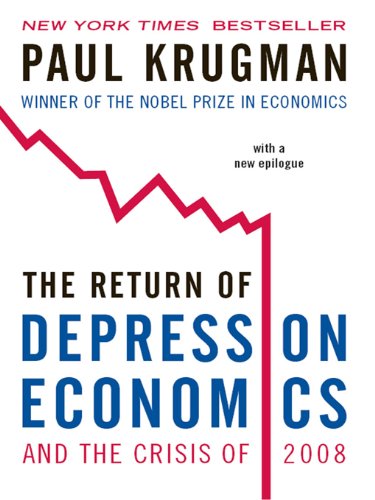Radical Technologies: The Design of Everyday Life, Adam Greenfield, Verso Books, 2017, pp. 359, $39.99, 978- 1- 78478 – 043 – 2
If we were to judge a book by its cover, Radical Technologies, published by the ‘largest independent, radical publishing house in the English speaking world’, one would assume that the book will delve into the emancipatory potential of the new technologies and their ability to challenge the current modes of oppression. However, no such claim is forthcoming in Adam Greenfield’s book. In fact, quite the opposite, Greenfield states that these ‘radical’ technologies fundamentally transform our relationship to the socio-economic realm we inhabit. They are “the conduit through which our choices are delivered to us, the mirror by which we see ourselves reflected, and the lens that lets others see us on a level previously unimagined” (p.6). Technology is the way we experience our everyday lives.
Although it penetrates our every day, few can boast to know how these are made to function, their promises and their pitfalls. This inequality in knowledge leads to the exclusion of a huge number of people in the design of the very technologies that order their lives, thus leaving them at the mercy of the technological elite. The excluded may thus partake in their own enslavement, for example, without the ability to alter their lot. A way to ensure that we retain the agency to influence the development and functioning of constantly emerging technologies is to obtain a semblance of knowledge necessary to meaningfully interject and regain control over the process. Adam Greenfield’s book seeks to offer precisely that, a manual. Greenfield chooses to focus on 8 technologies that are implicated in our everyday lives: the smartphone; the internet of things; augmented and virtual reality; 3D printing; digital currencies; automation; machine learning and artificial intelligence. He analyzes their effects, and what kind of future they promise to usher us in.
And the future is bleak.
The smartphone is the most prominent device that has colonized our everyday. Feeling lonely? Swipe right. Feeling photogenic? Alter your complexion on the photo? Add bunny ears? Find the fastest route to your desired destination? Purchase a good or a service? Open an app. Our lives begin and end with a twitch. The functionality, however, depends on our ability to inject ourselves in the complex corporate ecosystems that provide these various functionalities. This is telling, for by partaking in these aspects we are not simply confronted with a rectangle and an interface, but by a gargantuan system of technical, financial, legal and operational arrangements; all shaped by the specific interests and contingencies reliant upon market dynamics. At the fundamental biophysical level, the cobalt powering the lithium-ion battery is mined by children in the Congo, while tin comes from the Indonesian island of Banga, whose waters are rendered toxic in the process. Wages are low, suicides prevalent and the environment is destroyed. There is misery at every level of the supply chain. But all that is well documented. Our purchase and use of the smartphone requires cognitive dissonance to be embedded in the process and the act.
The bulk of Greenfield’s analysis focuses on an aspect seemingly innocent; maps. Their use is dependent on continuous and undisturbed access to a network. Reliance is accomplished by giving up control and “our sense of the world is subtly conditioned by information that is presented to us” (p.23). Enter suggestions. In wanting to treat ourselves to dinner outside, we are presented with an option to explore restaurants mapped across the desired space. It should seem obvious that digital maps offer a particular kind of information, guided by interest or obscured by the sheer inability to account for the continuous process of retail businesses opening and closing, changing locations, altering their working hours. One out of every five of these searches results in a ‘conversion’, or sale, meaning that these revenue-generating processes are rendered part and parcel of our behavior. Now, given that the smartphone is essentially a data generating device, each map or search returns personalized results, which as Greenfield rightly states “ensures that we can only ever occupy and move through our own separate life worlds” (p.24). Indeed, we give up privacy for convenience in the ideology of ease and in turn alter our social habits in counterproductive ways.
The internet of things is represented by a network that wraps every space, object, and individual on Earth. The streams of data can be acted upon in various ways, from designing ‘smart cities’ to offering customers their most used product. The internet of things strives for universality, the ability to produce ‘perfect knowledge’. In applying this to the market and market interests, technological giants devise devices capable of short-circuiting the market and the mind. Enter Amazon Dash, aimed at delivering a pre-determined list of goods at the press of a button. Amazon Dash embodies the market which invades the intimacy of our home; there, immobile and ready to serve our needs. Google, Microsoft, Amazon, and Apple all offer a version of speech-recognition devices acting as in-house personal assistants connecting us to the market in a typical plug-and-play fashion that minimizes thought in order to maximize purchase. Alexa listens to our commands and books a table on OpenTable app; a platform that obliges participating outlets to adopt the software of the app itself and charges $1 per table booked. Inherent in this is a process of filtration; those unable to conform are effectively pushed out of the market. It is eerie to think that these devices hear us constantly. Embodied in such technology is underpaid labor, of course.
The internet of things suggests that data can be put to use to further specific ends. Be it technological giants, or more illiberal regimes. Either way, the potential is inherent in the very existence of such an overwhelming amount of data that correlations may be easily constructed for whatever use necessary. We must then think of data as operating within a pre-determined power system capable of serving the ends of power. And that should frighten us.
Other technological advances position themselves as being able to improve our lot by overcoming limitations inherent in our species. Tacitly they suggest that there is indeed something worth overcoming in the first place (p.82). However, biological predispositions of our species are hard to be overcome by technology alone, as is the case with wearable tech, which leaves the human dizzy and disoriented upon taking them off. In other words, there are insurmountable limits to our species’ biological potential.
The promise of radical technology is to alter everyday life, and in so doing, it has to combat the deeply entrenched social habits and biases. The promise of digital currencies or cryptocurrency is to circumvent the centralized processes of the state, which has the ability to influence the value of the currency, intercept or allow transactions to happen and strip holders of all their monetary devices. Greenfield does an admirable job in outlining the basics of how Bitcoin operates, and the processes required for its smooth functioning. In spite of its promise and taking the world by storm, Bitcoin never really entrenched itself as a way for individuals to perform exchange on the market. Not only do very few retailers accept Bitcoin as a valid unit of transaction, but the coin itself also suffers at the hands of the unregulated market with its value swinging sharply from hundreds to thousands of dollars and back again. Such unstable fluctuations dissuade potential users from engaging in mining or proof-of-work calculations. Very few would be willing to wait 10 minutes for the transaction to be confirmed by the network when they can enjoy the immediacy of the fiat cash.
Moreover, as Bitcoin becomes increasingly popular, its use becomes increasingly elusive as technological capabilities become concentrated within a small circle of technology experts possessing the requisite technology. Indeed, two massive Chinese mining operations, AntPool and DiscusFish/F2 Pool control over 51% of the total mining power (p.139). This leaves the users particularly exposed to the effects that possible collusion between the two might have. Moreover, the biophysical requirements to sustain and operate such a network are abundancy of electricity and ultimately its cheap value, which helps to sustain constantly running processors. In fact, as Greenfield suggests, Bitcoin fails to account for basic thermodynamics. The amount of heat lost due to its functioning can have a significant effect on heating up the Earth. Bitcoin operations use more electricity than Ireland (p.140).
The technology operates within the economic system of capitalism, whose goals of profit and growth then orient technological development. Nowhere is this more clearly seen than in the process of automation, or replacement of human workers with algorithms. While automation claims to supplant human imperfection and discretion with a seamless process of perfect execution, its effect is also to subdue human rebelliousness and labor disobedience. Greenfield wonders: “on our way to a world of total automation, we may often have time to contemplate what a society winds up looking like when its most mutinous voices have fallen silent” (p.205). Automation threatens to supplant any meaningful and consequential work by the human workers and render them powerless, part of an increasingly large pool of labor capable to be easily replaced if unruly and demanding. Automation then becomes a system of control rather than a promise of a bright future.
Replacing the human body can also be achieved by machine learning and artificial intelligence, composed of neural networks that are fed with algorithms in order to recognize patterns in the real world. As Greenfield shows, these algorithms are trained to develop classifiers that would enable them to generalize based on high correlation in data. However, the problems that arise out of these are overfitting and bias, where the ‘memorized’ data is reproduced rather than used to infer or where the algorithm fails to acquire anything essential about the object it is tasked with identifying. Google Images is the case in point, with its algorithms wrongly identifying black people as gorillas. We can infer from this how many things can go wrong when these systems are applied to policing the population, or used in any way that serves the powers that be, as is the case in Chicago where the police department uses software to predict where potential crimes will take place.
Pious submission before the altar of Technology is dangerous. Ultimately, we must apply ruthless criticism of technology that promises to bring benefits to humans. Rather than accepting this conclusion, we must ask, benefits for whom and what do we sacrifice to achieve them? Radical Technologies could also be viewed as a rallying cry for the Left not to surrender to technology fetishism and plug into the technology debate from a materialist perspective. Adam Greenfield has provided us with an excellent primer on how to do that.




